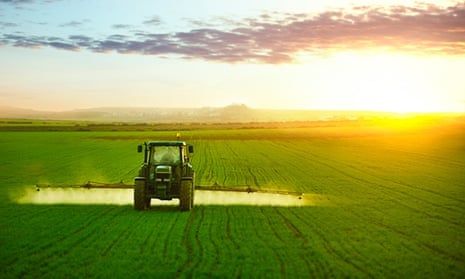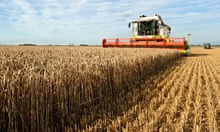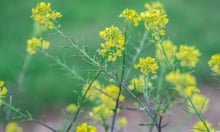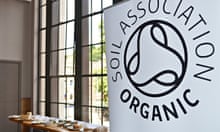How do you profitably invest in sustainable agriculture - farms producing diverse, fairly-priced healthy food without harming the environment, but which also restore soil fertility and provide farmers with a fair living? Small farms and community supported agriculture partnerships are nice, but they are predicted in the best-case scenario to reach only 1% to 2% of the population.
Target conventional farms
Farmland LP, a San Francisco-based fund and farmland manager pursues this goal by converting conventional mid-size farms to multi-crop “beyond organic” properties that use a closed-loop, where everything on the farm stays there, a process that reintegrates livestock, also making the system sustainable.
Its newfangled approach moves specialist farmers around the property based on ecology, biodiversity and what’s best for the land in the long run. It has five farms totalling 6,750 acres worth $50m under management east of San Francisco and in Oregon’s Willamette Valley.
Managing partner Craig Wichner claims that after the soil is restored, this approach (which eliminates the need to grow corn and soy for animal feed) produces the same amount of food as conventional agriculture, but is more profitable because input costs are so much lower.
While yields on farmland increased 38% since 1989, the cost of inputs used by conventional agriculture – fertiliser, herbicides, pesticides, GMOs and fuel – jumped about 325% during the same timeframe, according to the US Department of Agriculture’s Economic Research Service.
Premium for organic?
The five year-old firm has launched its second fund, a $250m private real estate investment trust, or REIT, open to institutional investors and high net worth individuals. Wichner plans to hold the land long-term, but pay investors an estimated 6-8% net cash flow after the soil has been certified organic in a three to five year conversion period.
According to Wichner, that’s nearly double the cash flow for conventional farmland, the price farmers generally pay to lease it. The hitch is that rather than lease land for a fixed cost, farmers share profits with the REIT, something that will be cheaper for them in a bad year and more expensive when times are good.
With such high returns, it appears the firm is betting on more good years than bad. But it currently has 20 different tenant farmers growing 20 different crops in diverse geographies. That means the fund’s volatility will be lower than for conventional farmland. But because the growing is more complex, Wichner says it’s more management intensive and requires more intellectual property. And it’s a “team sport.”
Even so, his estimates for the higher lease payments are based on his expectation that organic vegetables will continue to command a 50% to 200% premium to conventional, depending on the crop. About two-thirds of the land will remain in pasture, and 10-20% will be devoted to growing vegetables and 10-20% for grains.
According to Wichner, 2013 revenues were $1.8m representing a 3.6% gross cash flow – exactly the return he says you’d expect from conventional farmland. Most of that was generated from conventional crops grown on the 4,200 acres the firm bought in December 2012 where the lease for last year was already in place.
But the firm also had 783 certified organic acres last year. All told, Wichner says, 15% of revenues came from the sale of grass-fed lamb, cows and hogs that are feeding on pasture in the land conversion stage, and a small amount from the sale of organic seed.
Wichner claims that revenues will be boosted substantially in 2014, the first year Farmland LP is cultivating vegetables. Citing USDA statistics, he says it’s not unusual for organic farmers to gross $20,000 to $50,000 per acre.
Does this mean the firm’s projected high returns in any given year ultimately will come mostly from as little as 10-20% of its land? Not exactly. As farmers rotate around the site, of course, which part of the property that represents is constantly changing. That’s a must because annual crops are extractive, meaning they deplete soil. But there’s more.
Beyond organic to sustainable best practice
To replenish soil, conventional agriculture uses fertiliser that is synthesised from mined materials. Although organic fertiliser must be natural, it can still be mined. And organic farmers often use manure from feedlots or compost imported from off-site. Between crops, they use cover crops for protection against erosion between seasons, drought resistance, pest control, and to restore nitrogen and soil carbon.
There are two ways to move to sustainable best practice. The first is to plant annual cover crops such as clover or legumes – something that New York chef Dan Barber features in his new book, The Third Plate: Field Notes on the Future of Food. Barber points out that we cherry-pick organic farms when we eat ecologically demanding and expensive foods like heirloom tomatoes, and he argues that we should support the whole farm by including cover crops in our cuisine. Right now, organic farmers typically do not sell their cover crops for cash.
But pasture is another form of cover cropping, and one that could result in a very different diet of the future than the one Barber is promoting.
Here, imitating the diversity of nature, Farmland LP has planted the pasture in multiple perennial grasses in the same space. Unlike annuals, these plants have deep roots that can access nutrients and water not available to annuals, meaning they need less from the farmer. But it also makes them more resilient in extreme conditions. And they are also less energy intensive than annuals because they don’t need to be replanted each year.
Ultimately, though, the idea is that livestock and crops work together to regenerate the soil. Perennial plant roots link up with fungi that can delve 25 feet deep and pull minerals out of the earth’s rock, which are expressed in leaves. These, in turn, are eaten by animals and become part of the topsoil as the livestock’s manure decomposes.
“Cover crops are halfway there in a sustainable agriculture system, but that’s not enough,” Wichner explains, adding that livestock also improve the economics of farming. “Instead of just having a cost for the cover crop, you can convert that cover crop to a cash crop.”
Ellie Winninghoff writes about philanthropic and responsible investment and business
Read more stories like this:
- Big investors to act on carbon footprint of assets in bid to tackle climate change
- Sustainable corporations perform better financially, report finds
- Advertisement feature: Alternative finance needs to attract the next generation of business leaders
The finance hub is funded by EY. All content is editorially independent except for pieces labelled advertisement feature. Find out more here.
Join the community of sustainability professionals and experts. Become a GSB member to get more stories like this direct to your inbox




Comments (…)
Sign in or create your Guardian account to join the discussion